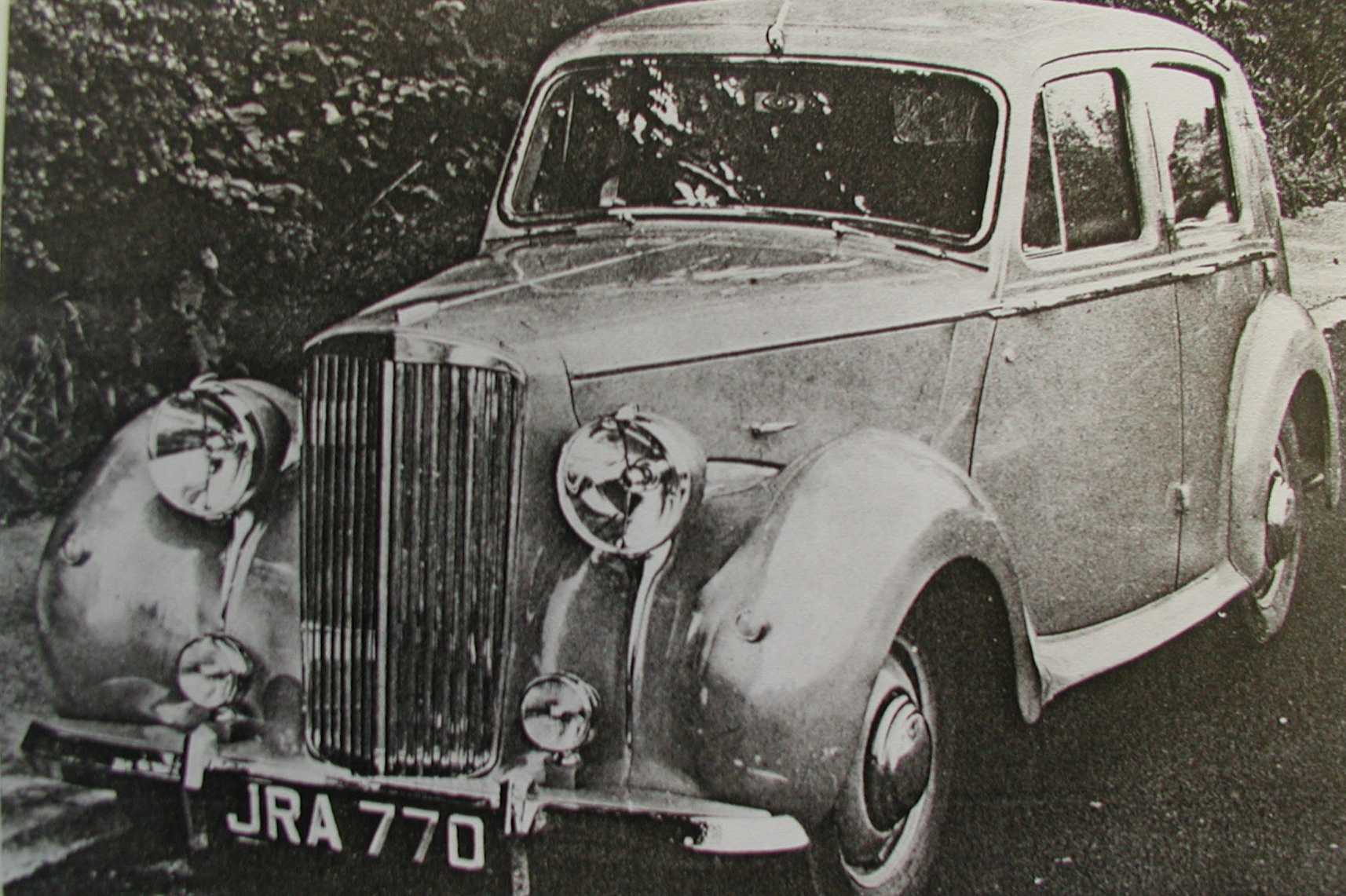
Triumph Mayflower
The "Watch Charm Rolls Royce" and the real "Rolls Royce Myth"
It has been said on many occasions that the Triumph Mayflower was an attempt to conquer the American market because it had pretensions of being mistaken for a Rolls Royce - after all the Americans loved Rolls Royce didn't / don't they?
A ten-horse-power four-cylinder engine for a car to be called Myth was made in September 1939 and tried by Rolls Royce in an Austin 10. When the Second World War ended enthusiasm for a Junior range was rekindled. There was to be an eight-cylinder among these Junior models as well as a six and a four. The eight never got off the ground, only five prototype Junior sixes were completed and one four. It was said that the four had an appearance not unlike a Triumph Mayflower with a modified Rolls-Royce type radiator shell having entwined Rs in the middle of the top arch above the centre bar. The engine in the Myth was the J-40 having a bore of 3.050 inches and stroke of 3.125 inches to give a displacement of 1497cc. The Myth was not given a chassis number but was known simply by its name and was fitted with a Park Ward four door Saloon body. There is no evidence that the car was ever registered although it appeared in photographs with JRA 770 on the front and GMAS 77 on the rear, both borrowed from other cars and fitted just for photography. The car almost certainly ran on Trade Plates.

1st September 1947 saw the first road test but after 6 miles of level road the engine boiled and the car had to be brought back to the garage for investigation. The water pump and thermostat were checked and the radiator and engine flushed through but on the second run it boiled again after 10 miles. The brake drums were found to be hot and so the brakes were slackened off, nevertheless the engine still boiled. After fitting ducting to ensure that all the airflow passed through the radiator it became possible to give the car a reasonable run without boiling although even now after one mile of 3rd gear climbing the temperature rose to 106 degrees C.
The car weighed only 22 cwt but had a poor performance and numerous faults which had still not been rectified by the time it made its last run on l0th September. This short-lived car covered only 407 miles in its 10-day life before joining other Rolls Royce cars in storage at Crewe. It was eventually scrapped.
Any attempt to bring the Myth to the market would almost certainly have been ill judged. Once Rolls Royce had again committed itself to large prestige vehicles, a shoal of minnows would have detracted from their charisma. This had largely been the experience of firms like Austin pre-war, the success of whose mass-popularity cars affected their credibility at the top end of the scale. In short, the Lord and Lady didn't want to be seen in the same make of car as the under-gardener's tenth hand, thirty bob hack. Thus the egalitarian potential of the Juniors and Myth has become just that.
|
|
I can see a vague resemblance to the Mayflower in parts. I think the Myth is a beautiful car and wish she'd gone into production. I'd certainly have one today to park next to my Mayflower! |
[Edited extracts form 'Rolls Royce and Bentley - Experimental Cars' by Ian W. Rimmer.]
©2001 - 2011 TRIUMPH MAYFLOWER HISTORIAN
. All rights reserved. You may not copy or distribute photographs or information from this site without prior written permission. Information is believed to be accurate, however due to the many and dynamic sources I do not warrant the validity of facts, dates, availability or other information shown here. Please confirm dates and venues of any event mentioned before you travel.Revised: August 2011